Anxiety disorders affect 40 million adults in the United States. Although they’re treatable, only 37 percent of those suffering receive treatment, according to the Anxiety and Depression Association of America.
Anxiety comes with many physical symptoms, including chest pain, dizziness, and brain fog. A panic attack or anxiety episode can be scary and difficult to manage, but experts agree breathing techniques can help during those times. Here are several ways to relieve the symptoms of anxiety through breathing.
Deep breathing
Taking calm, deep breaths can be soothing. It’s going to be best if you can be somewhere away from people or a stressful situation.
What to do:
The simplest method of deep breathing is to slowly breathe in through your nose for about 5 to 6 seconds, hold for a few seconds, and breathe out slowly through your mouth close to 7 seconds. Breathe out like your whistling. Repeat 10 times.
Co2 rebreathing
When you hyperventilate, you may feel like you’re not getting enough oxygen, but you’re actually getting too much oxygen and your carbon dioxide levels are low.
What to do:
Cup your hands over your mouth and breathe slowly. You can also try using a small paper bag. This may help balance the level of Co2.
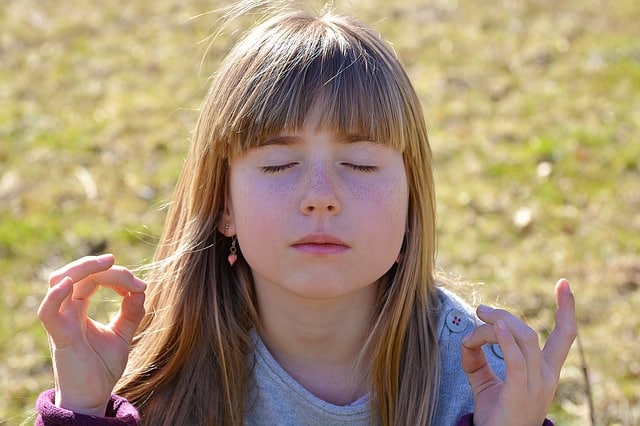
Simple meditation breathing
Psychology Today recommends this as being one of the most effective anxiety relief techniques.
What to do:
The only thing you have to do is breathe out slowly. The key is to focus on your out-breath and ignore your in-breath. Your in-breath will naturally lengthen when your out-breath is longer, so there’s no need to focus on the in-breath. Your breath out should be slow, steady and gentle. It may be helpful to imagine you’re blowing up a balloon, slowly and steadily with the absolute least amount of force. Breath out until the last bit of breath is released.
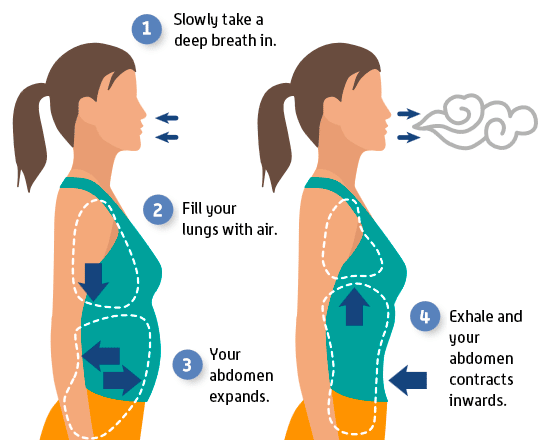
Diaphragmatic breathing
In yoga, this method is used to quiet and calm the nervous system.
What to do:
Lie on your back with your knees bent and your feet flat on the floor, about hip-distance apart. Place a palm on your abdomen and breathe comfortably for a few moments, paying attention to the quality of your breath: Does it feel tense or strained? Uneven? Shallow? Gradually begin to make your breathing as relaxed and smooth as possible with a slight pause after each in-breath and out-breath.
Once your breathing feels relaxed and comfortable, you’ll notice that as you inhale, the abdomen naturally expands. As you exhale, the abdomen contracts. Continue to support the natural movement of the diaphragm for 6 to 12 breaths.
The cooling breath
The Cooling Breath is a technique used in yoga, and the proper term for it is Sitali Pranayama. This is the act of drawing the air across the tongue and into the mouth to have a cooling and calming effect on the nervous system.
What to do:
Sit comfortably, either in a chair or on the floor with your shoulders relaxed and spine naturally erect. Lower the chin, curl the tongue lengthwise and project it out of the mouth to a comfortable distance. Inhale gently through the straw formed by your curled tongue while lifting your chin toward the ceiling, lifting only as far as you are comfortable. At the end of inhalation, with your chin raised, retract the tongue and close the mouth. Exhale slowly through the nostrils as you lower your chin to a neutral position. Repeat for 8 to 12 breaths.
Sitkari Pranayama
This technique is for those who cannot curl their tongue, which is needed for Sitali Pranayama.
What to do:
Open the mouth slightly with your tongue just behind your teeth. Inhale slowly through the space between the upper and lower teeth, allowing the air to wash over your tongue as you raise your chin toward the ceiling. At the end of the inhalation, close your mouth and exhale through your nostrils as you slowly lower your chin back to neutral. Repeat for 8 to 12 breaths.
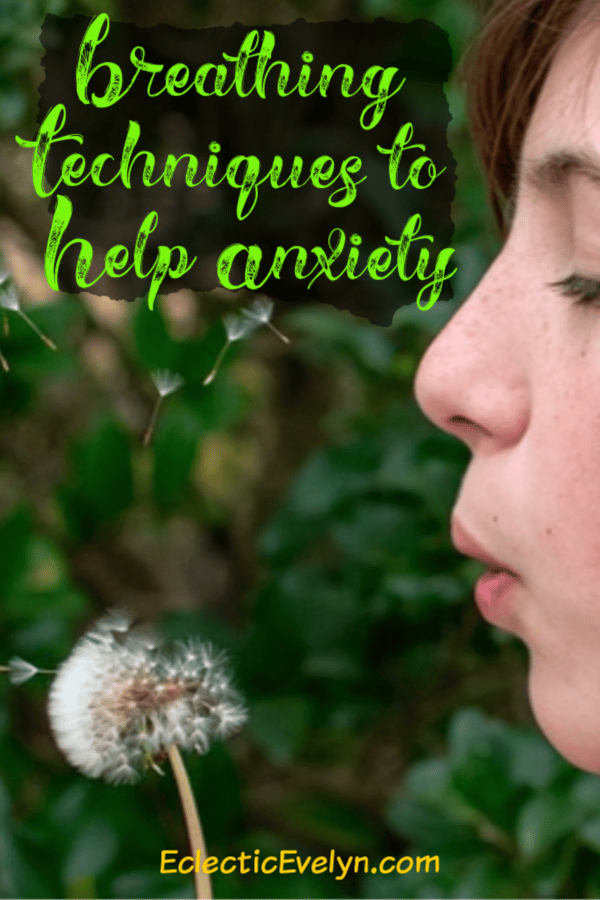
The long exhale
This 1:2 breathing practice is especially helpful if anxiety is causing sleep problems.
What to do:
Try this before bedtime or in the night if you’re having insomnia. Lie on your back with your knees bent and feet flat on the floor, hip-width apart. Place a palm on your abdomen and take a few relaxed breaths, feeling the abdomen expand on the inhalation and contract on the exhalation. Mentally count the length of each inhalation and exhalation for several breaths.
Make the breaths equal length, gradually increasing the length of exhalation by 1 to 2 seconds by gently contracting the abdomen. As your breathing becomes smoother and more relaxed, continue to gradually increase the exhalation by 1 to 2 seconds once every few breaths. Make sure you experience no strain as the exhalation increases and keep going until your exhalation is up to twice the length of the inhalation, but not beyond. For example, if your inhalation is comfortably 4 seconds, do not increase the length of your exhalation to more than 8 seconds.
Author Credit: Jenny Ivy
[contentblock id=9 img=gcb.png]

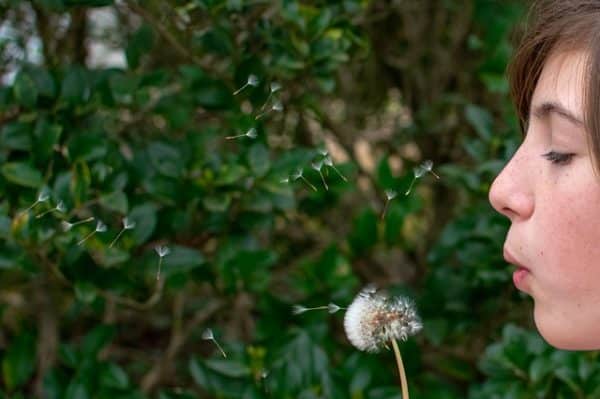


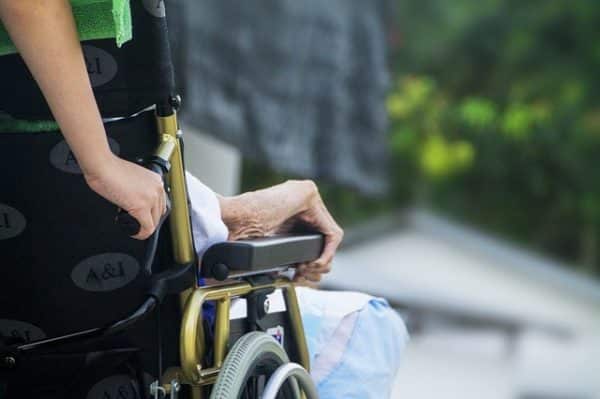
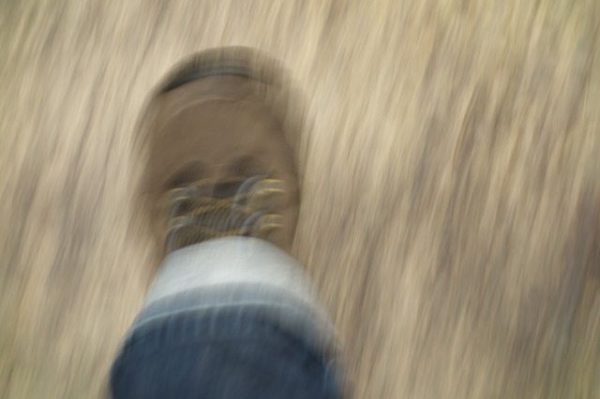
Thanks for sharing. I’ve been practicing mindfulness meditation breathing and it has helped with my anxiety A LOT! A fellow blogger wrote that the body can’t be anxious and at rest at the same time. When we do deep breathing, we are showing our body that it is at rest.
Thanks for the great article! I have major anxiety issues, and I find myself taking shallow breaths and even holding my breath. Not good.
I have anxiety and breathing really helps me. Also, the 5 things method helps with distractions when I am feeling panicky.
I’d say a lot of people might find these techniques helpful these days. There’s a lot to produce anxiety out there right now.